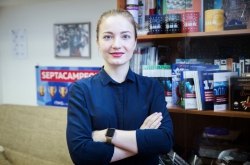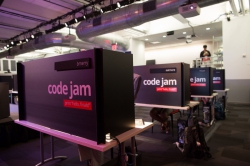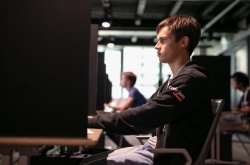What makes Google Code Jam to I/O for Women different from other programming competitions?
It’s a typical programming competition – it includes four or five problems and a two-and-a-half hour limit. Winners are determined according to how fast they can solve all of the tasks. This is the second time that the competition is held – last year, notably, there were nearly no participants from Russia. The problems are just the same as at any other contest. I placed 9th, having solved all the tasks in 2 hours and 11 minutes. Anya Nikiforovskaya, a student of Andrey Stankevich, has shown the best performance among the Russian participants and placed 4th. Google has invited some of us to the Google I/O international conference in Mountain View, California – we’re going there in May.
What made you go into programming?
When I was in fifth grade, I learned about Pascal, which I enjoyed solving tasks with. Since then, I couldn’t imagine myself in any other career. Then I started taking part in school Olympiads – it felt great to come out ahead of the boys who were once better at it than me. In 11th grade, I had to choose between ITMO University and the Moscow Institute of Physics and Technology – the top programming universities. I went with the former and do not regret that choice for a minute. The subjects and professors are great and the students are smart and well-rounded.
Where can girls who are interested in computer science and programming affirm their love of science and prepare for higher education in these fields?
The best place I know like this is the Summer IT School – an incredible place with incredible people. I learned about it a bit late and only attended after ninth grade. That summer changed my life profoundly. Every day, we had theoretical and practical classes, solved interesting tasks, attended special courses and clubs, played intellectual games. There, I learned hustle dancing, performed in a play, met smart people and learned to play Frisbee. The school combined complex training with teenager activities, which is, I believe, the best option for kids who are into programming.
In what area of programming would you want to keep working?
Right now I’m writing a term paper on evolutionary algorithms, though I can’t devote as much time to it as I should. I’m not yet sure what I’ll focus on in the longer term. But I feel drawn towards bioinformatics and machine learning.
Why are there so few female programmers?
I believe that the reason for lack of women in programming isn’t a gender difference, but an issue of upbringing or, at times, prejudice. There aren’t many girls who apply to our department – around 10% of all the applicants. Unfortunately, not all of them can handle the difficult learning process and get their diploma. But those who succeed will no doubt become successful in whichever career they pick. Right now I don’t take part in collegiate programming competitions alongside male programmers, as I channel all my energy towards my work at the department – which is also very programming-intensive – and teaching. I’m in charge of an Olympiad programming club at ITMO and I also teach kids from the 56th Gymnasium (a school that emphasizes preparation for higher education studies – Ed.). The IT world doesn’t end at ACM ICPC and clichéd images of bearded programmers. It is also full of various competitions of different levels, organized and operated by women. For instance, our tutor, Lidia Perovskaya, is one of our most important organizers of various competitions, both at ITMO University and in general.
Would you want to see more women among the department’s staff?
Of course I would. We’re always glad to see those who are driven, smart and beautiful in every aspect. I think that ITMO University shows that everyone has the same opportunities despite their gender: there are many very successful and enterprising women working here. So the main factor of success still remains the will to achieve.






